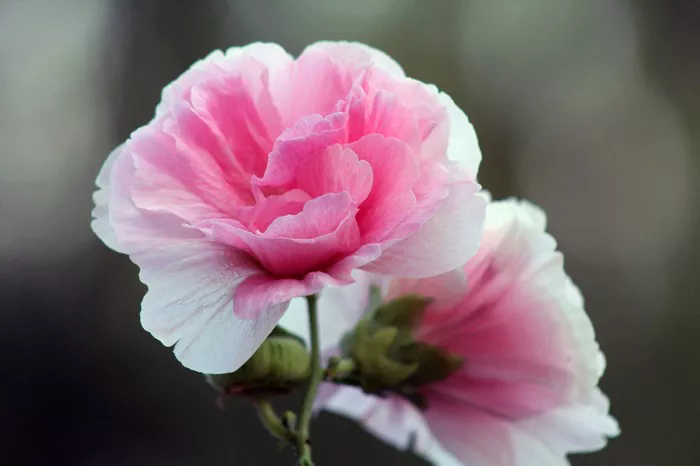Hibiscus flowers, with their vibrant hues and delicate petals, not only add aesthetic appeal to gardens but also offer a plethora of health benefits and culinary uses. From crafting herbal teas to garnishing salads, dried hibiscus flowers serve as versatile ingredients. Properly drying these flowers preserves their color, flavor, and nutrients, ensuring they can be enjoyed year-round. In this comprehensive guide, we’ll delve into the techniques and methods for drying hibiscus flowers effectively.
Understanding Hibiscus Flowers
Before diving into the drying process, it’s essential to understand the nature of hibiscus flowers. Hibiscus, belonging to the Malvaceae family, encompasses hundreds of species, with Hibiscus sabdariffa being the most commonly cultivated for culinary and medicinal purposes. Known for its tart flavor and vibrant crimson color, Hibiscus sabdariffa, also called roselle, forms the basis for many herbal teas and culinary recipes.
Benefits of Dried Hibiscus Flowers
Dried hibiscus flowers boast an array of health benefits, making them a valuable addition to any pantry. Rich in antioxidants, such as flavonoids and anthocyanins, hibiscus flowers possess anti-inflammatory properties that support cardiovascular health and may aid in lowering blood pressure and cholesterol levels. Additionally, they contain vitamins A and C, iron, and various minerals, enhancing their nutritional value.
Selecting Fresh Hibiscus Flowers
The first step in the drying process is selecting fresh hibiscus flowers. Choose flowers that are fully bloomed with vibrant petals and minimal blemishes or damage. Harvest the flowers early in the morning when they’re at their freshest and most fragrant. Ensure they’re free from pesticides or other chemical residues, as these can affect the quality and safety of the dried product.
Preparation for Drying
Once you’ve harvested fresh hibiscus flowers, it’s crucial to prepare them properly for the drying process. Start by gently rinsing the flowers under cold running water to remove any dirt, insects, or debris. Pat them dry with a clean kitchen towel or paper towel to absorb excess moisture. Remove any damaged or discolored petals, as these can affect the appearance and flavor of the dried flowers.
Methods for Drying Hibiscus Flowers
There are several methods for drying hibiscus flowers, each offering its own set of advantages and considerations. Experiment with different techniques to find the one that best suits your preferences and resources.
1. Air Drying:
- Spread the prepared hibiscus flowers in a single layer on a clean, dry surface, such as a baking sheet or wire rack.
- Place the flowers in a well-ventilated area away from direct sunlight to prevent fading.
- Allow the flowers to air dry for approximately 1-2 weeks, or until they feel crisp and brittle to the touch.
- Turn the flowers occasionally to ensure even drying and prevent mold or mildew formation.
2. Oven Drying:
- Preheat your oven to the lowest possible temperature, typically around 100-150°F (38-65°C).
- Arrange the prepared hibiscus flowers on a baking sheet lined with parchment paper, ensuring they’re spaced apart to allow for air circulation.
- Place the baking sheet in the preheated oven and prop the oven door open slightly to allow moisture to escape.
- Check the flowers periodically and rotate the baking sheet to ensure uniform drying.
- Drying times may vary but typically range from 2-4 hours.
3. Dehydrator Drying:
- If you have a food dehydrator, set it to the lowest temperature setting, usually between 95-115°F (35-46°C).
- Arrange the prepared hibiscus flowers on the dehydrator trays in a single layer, ensuring adequate spacing between each flower.
- Insert the trays into the dehydrator and allow the flowers to dry for approximately 4-6 hours, checking periodically for dryness.
- Adjust the drying time as needed based on the moisture content of the flowers and the dehydrator’s temperature settings.
Storage and Preservation
Once the hibiscus flowers are fully dried, it’s essential to store them properly to maintain their quality and flavor over time. Follow these guidelines for optimal storage and preservation:
- Transfer the dried hibiscus flowers to airtight containers, such as glass jars or resealable bags, to protect them from moisture, light, and air.
- Store the containers in a cool, dry place away from direct sunlight, such as a pantry or cupboard.
- Label the containers with the date of drying to ensure freshness and track the shelf life of the flowers.
- Avoid storing dried hibiscus flowers near strong-smelling spices or ingredients, as they can absorb odors and flavors.
Creative Uses for Dried Hibiscus Flowers
Once you’ve mastered the art of drying hibiscus flowers, explore the various culinary and decorative applications they offer:
Herbal Tea Blends: Create flavorful herbal teas by infusing dried hibiscus flowers with complementary ingredients such as mint, ginger, or citrus zest.
Floral Infusions: Add dried hibiscus flowers to homemade syrups, vinegars, or cocktails for a burst of color and flavor.
Culinary Garnishes: Sprinkle dried hibiscus flowers over salads, desserts, or savory dishes to add a decorative touch and subtle tanginess.
Potpourri and Sachets: Incorporate dried hibiscus flowers into potpourri blends or sachets for their aromatic properties and visual appeal.
Natural Dyes: Use dried hibiscus flowers to create natural dyes for fabric or Easter eggs, producing vibrant shades of pink, purple, or red.
Conclusion
Drying hibiscus flowers is a simple yet rewarding process that allows you to preserve their beauty, flavor, and nutritional benefits for year-round enjoyment. By following the techniques and methods outlined in this guide, you can ensure that your dried hibiscus flowers retain their vibrant color, tangy flavor, and myriad uses in culinary and decorative applications. Experiment with different drying methods and get creative with how you incorporate dried hibiscus flowers into your recipes and crafts. With a little time and effort, you’ll have a supply of dried hibiscus flowers ready to elevate your culinary creations and brighten your home with their natural beauty.


